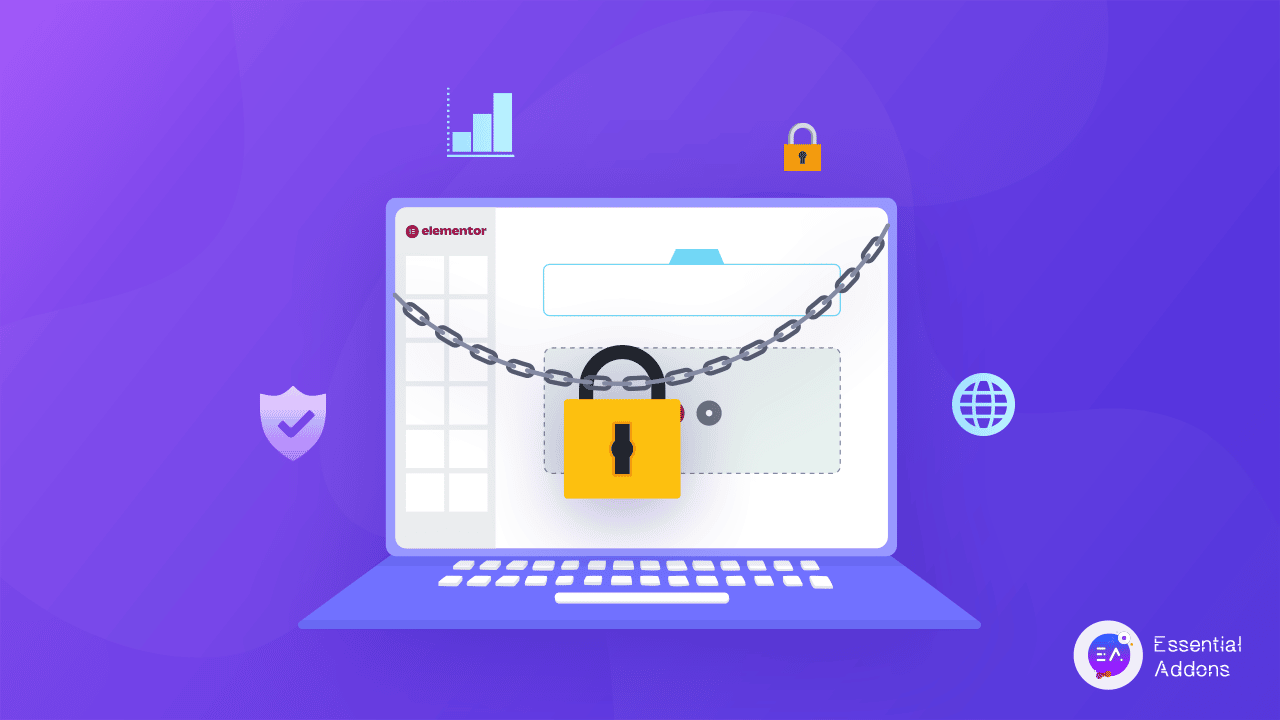It’s no secret that cyber threats are continually developing and growing. Cyberattacks increased by 32% in Q2 2022 against Q2 2021. With the advancement of technology, every day, new dangers surface, and existing threats evolve in the virtual world.
Elementor, the website builder for WordPress, takes the job of developing safe and secure plugins very seriously. In order to maintain top-tier Elementor Security, its developers are extensively coached to produce safe, secure code and to continually check for vulnerabilities.

Elementor Security: How It Fights With Online Threats
However, like with any software, vulnerabilities can emerge even with the amount of knowledge and monitoring that Elementor deploys. As a result, there are several things that every web designer should be aware of and do in order to keep their websites as safe as possible.
Elementor prevents security breaches by using expert personnel who constantly watch for any problems. In addition, the support teams may be notified by people in their community channels, findings from security software makers, and of course their testing procedures.

When the Elementor security team discovers a critical vulnerability, they begin by studying and evaluating it from every viewpoint. To avoid endangering its users before releasing a remedy, the security team keeps the reported flaw private. Once the Elementor security team has implemented the patch, they can alert users about the vulnerability and its solution.
Cyber Threat Landscape: An Ominous Sign For All Website Owners
The extent of identified and future cybersecurity risks affecting certain sectors, companies, or user groups at any one moment is referred to as a cyber threat landscape. The landscape is always shifting as new threats arise.
Everything from new assault tactics to global pandemics contributes to a shifting danger landscape. The increased reliance on technological items has an influence on our danger scenario. Growth in the IoT industry has given rise to a new breed of smart gadgets that are too linked to the internet and thus exposed to attack.
5 Red Alert Online Threats For All Elementor Users & How To Adapt
However, like with any software, vulnerabilities can emerge even with the amount of knowledge and monitoring that Elementor deploys. As a result, there are several things that every web designer should be aware of and do in order to keep their websites as safe as possible.
The most frequent Elementor security vulnerabilities arise before or shortly after your site has been hacked. A hacker’s purpose is to get illegal administrator access to your Elementor site, either from the front or from the server.
🎯Eliminate Brute Force Attacks On Your Site
Elementor brute force assaults are the process of repeatedly typing numerous login and password combinations until a successful combination is identified. The brute force assault approach takes advantage of the most basic way to get access to your website: the WordPress login page.

Since WordPress does not limit login attempts by default, bots can use the brute force attack method to assault your WordPress login page. Even if a brute force attack fails, it may still cause havoc on your server by overloading your system and slowing down your site. Due to system load variations, some providers might suspend your account while you are under a brute-force assault, especially if you are on a shared hosting plan.
🔦Eradicate Cross-Site Scripting For Sheer Security
Cross-site scripting (XSS) attacks account for 54.4% of all WordPress security vulnerabilities revealed in 2021. The most prevalent vulnerability identified in WordPress plugins is cross-site scripting.
The basic method of cross-site scripting is as follows: an attacker discovers a means to trick a victim into loading web pages containing unsafe javascript scripts. These scripts load without the visitor’s awareness and are subsequently used to steal data from their browsers.

🖥️ Enhance Emphasis & Dedication On Cloud Security
As more businesses transfer their activities to the cloud, the necessity of safeguarding these environments becomes more evident. According to a recent poll, 80% of businesses use cloud services, and this number is anticipated to rise in the coming years.
To solve these difficulties, organizations must take a proactive approach to cloud security. It entails putting best practices in place, such as multi-factor authentication, encryption, and regular security audits. Companies should also collaborate with reputable security partners to ensure that their cloud environments are sufficiently secure.

📕Monitor PHP File Inclusion Exploits
Following brute-force assaults, vulnerabilities in your WordPress website’s PHP code are the most prevalent security vulnerability that attackers may exploit. (PHP is the code that powers your WordPress website, as well as its plugins and themes.)
When susceptible code is used to load external files, file inclusion exploits occur, allowing attackers to obtain access to your website. File inclusion attacks are one of the most popular ways for an attacker to obtain access to the wp-config.php file on your WordPress website, which is one of the most crucial files in your WordPress installation.
🤖Leverage Artificial Intelligence In Cybersecurity
Artificial intelligence (AI) has the potential to change the way we think about cybersecurity. AI may help organizations discover and respond to dangers more quickly and efficiently by automating certain processes and analyzing massive volumes of data.
Threat identification and response is one of the most promising areas for AI use in cybersecurity. AI could be used by organizations to analyze massive volumes of data, such as network logs and traffic, in order to find patterns that suggest a possible attack. Furthermore, businesses may employ AI to automate certain operations like patch management and disaster recovery, allowing them to be more efficient and successful in their security efforts.

Bonus Read: Best Free Tools to Scan WordPress For Vulnerabilities
If the security of your WordPress website is one of your top priorities, you should invest in solutions that check for vulnerabilities and security. Whether your website has been hacked, is leaking data, or has been infected with malware, these issues are hard to handle manually. You can keep your site safe and free yourself of this strain by using the correct WordPress scanning tools.

If you enjoy this article and do share it with others. Also, don’t forget to subscribe to our blog to be the first to get WordPress tutorials, guides, and tips.
![[New Extension] How to Show Vertical Text on Elementor Websites?](https://essential-addons.com/wp-content/uploads/2025/11/Essential-Addons-New-Extension-Vertical-Text-Orientation-1024x576.jpg)



